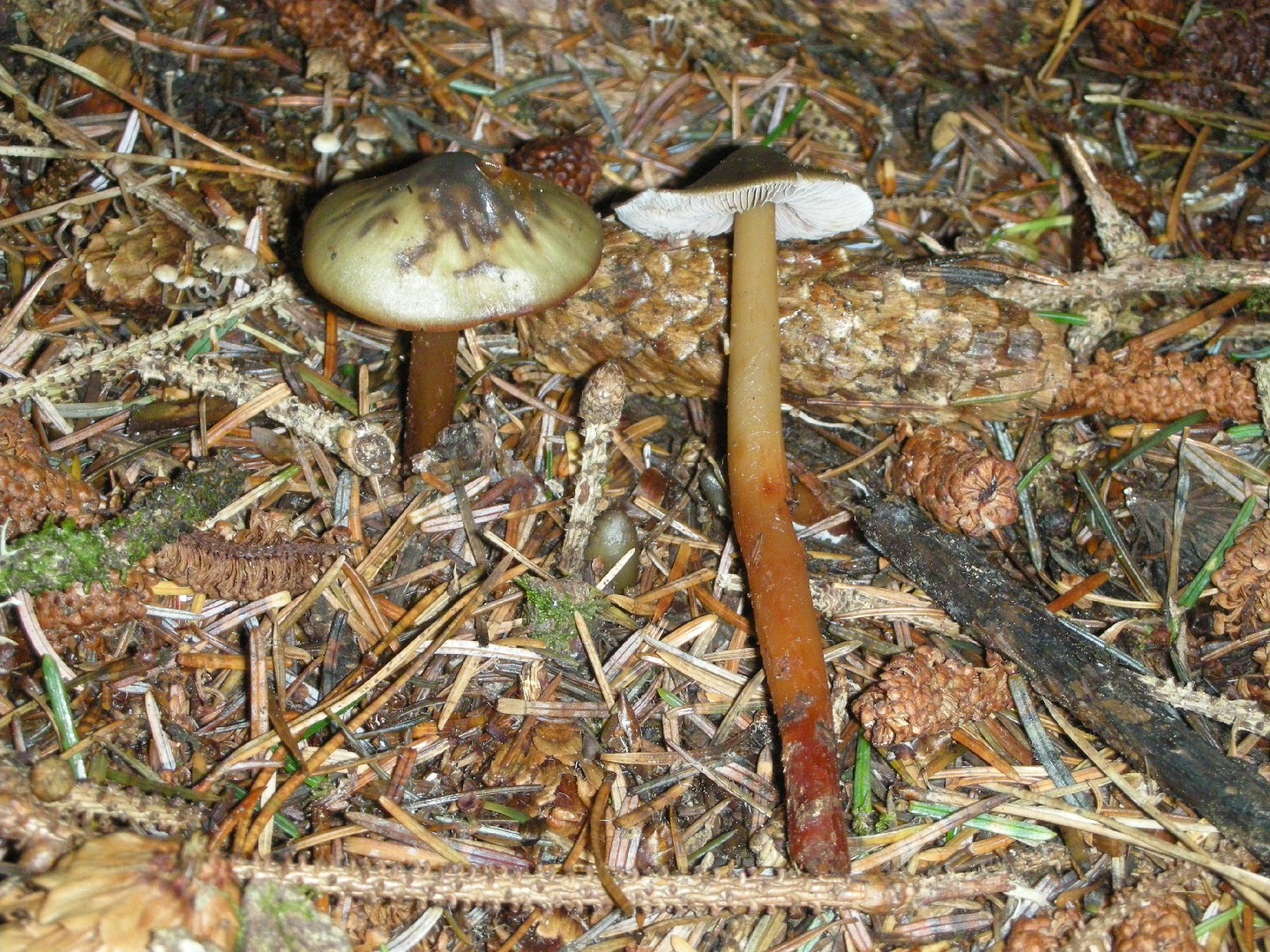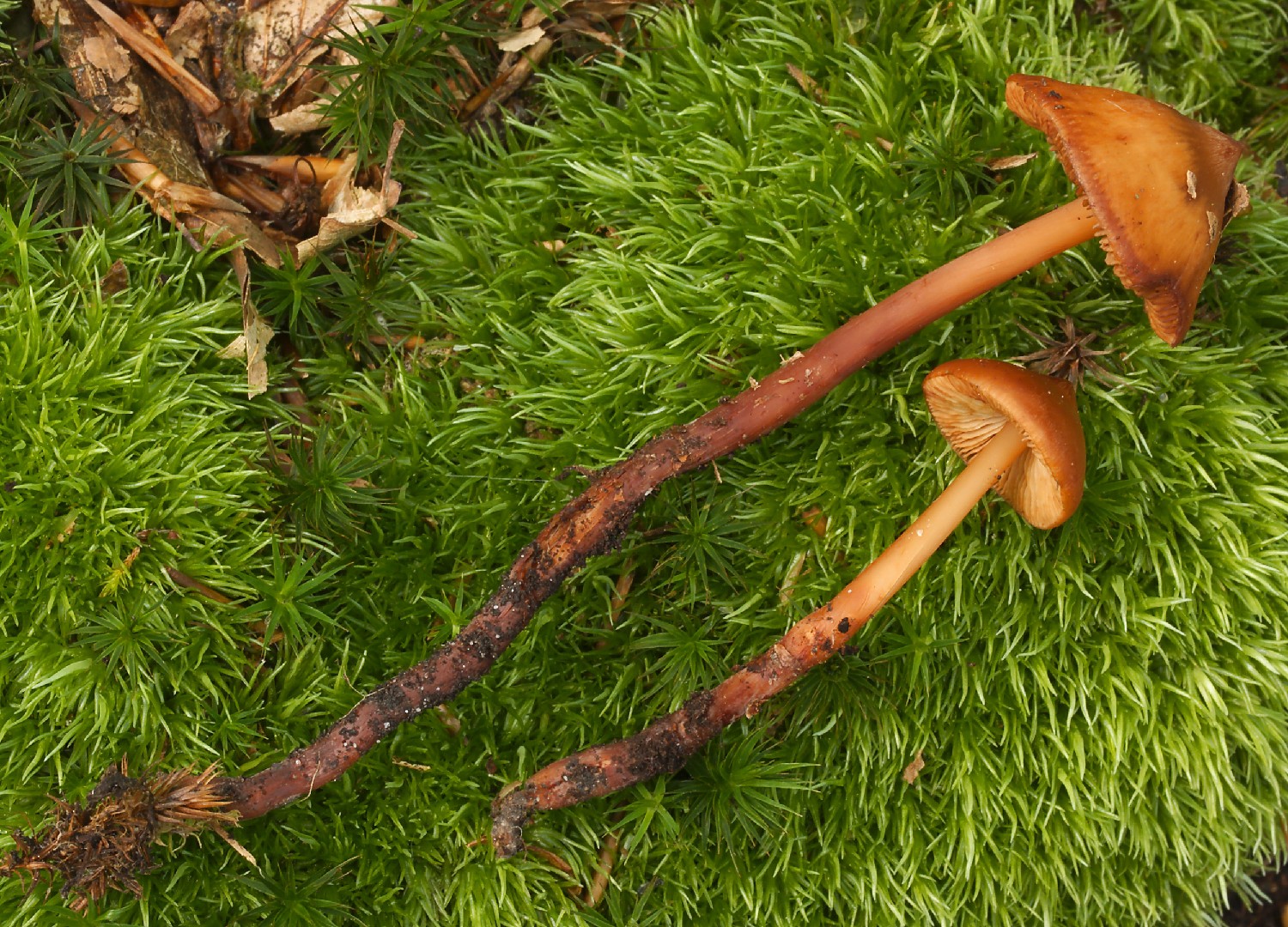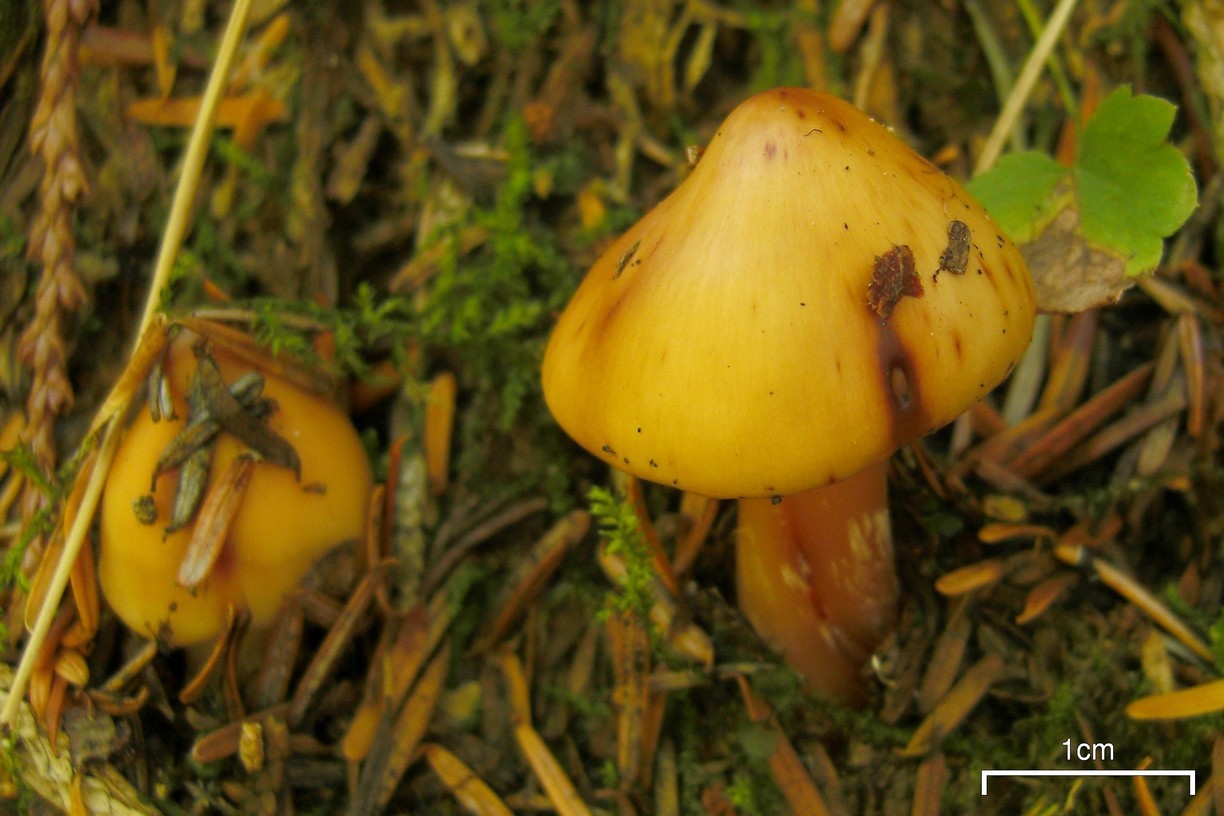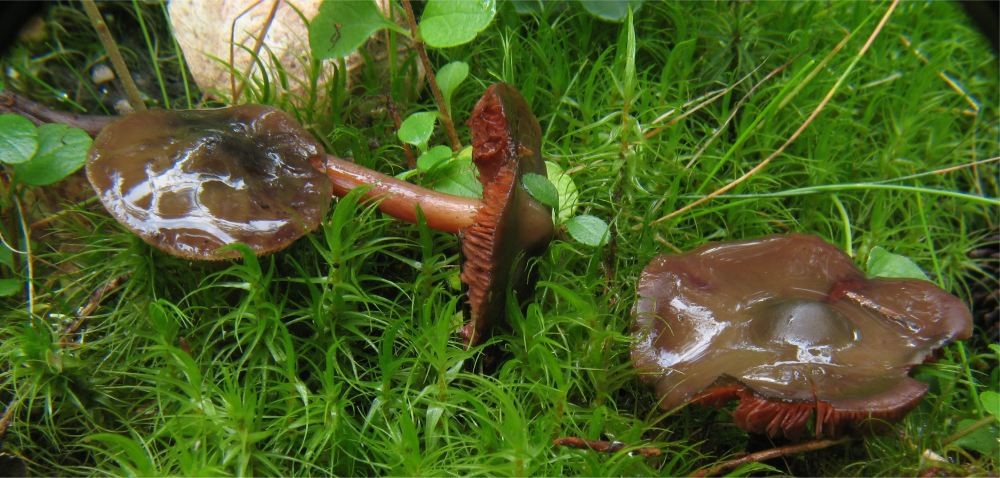Phaeocollybia
Scientific name: Phaeocollybia
Phaeocollybia
Scientific name: Phaeocollybia
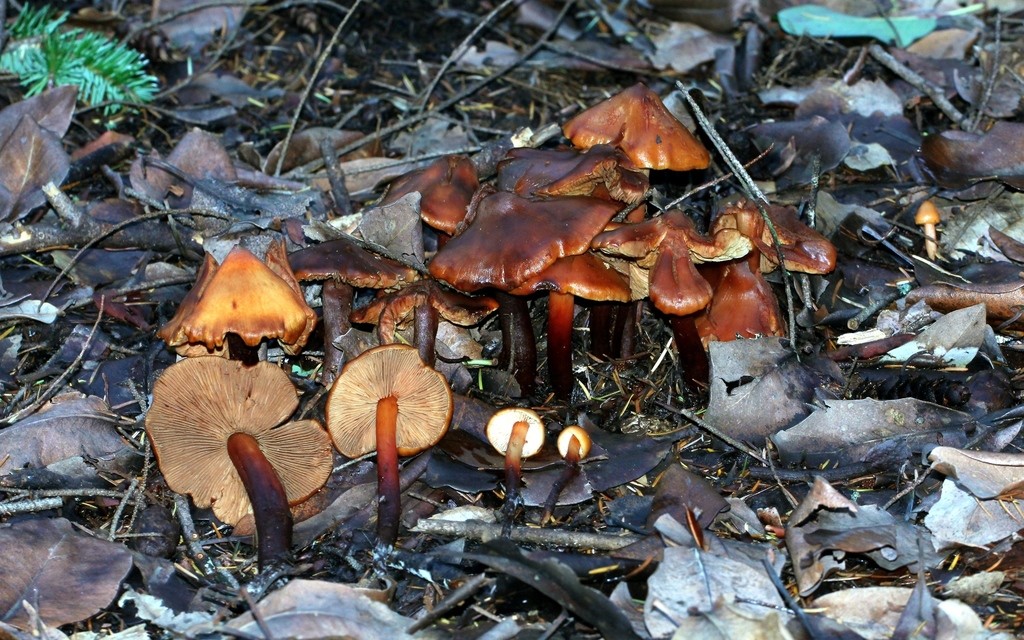 Photo By alan_rockefeller , used under CC-BY-4.0 /Cropped and compressed from original
Photo By alan_rockefeller , used under CC-BY-4.0 /Cropped and compressed from original Description
Phaeocollybia is a group of fungi known for their unique and curious features. They typically have a pointed, cone-shaped cap that tapers to a slender stalk. One fascinating fact is that phaeocollybia's fruiting bodies often have a deep root-like structure known as a pseudorhiza, which anchors them firmly to the ground. Found primarily in forested areas, their presence is often an indicator of healthy, undisturbed ecosystems.
Species of Phaeocollybia
Scientific Classification
Phylum
Club fungi Class
Mushroom-forming fungi Order
Gilled fungi Family
Cortinariaceae Genus
Phaeocollybia 